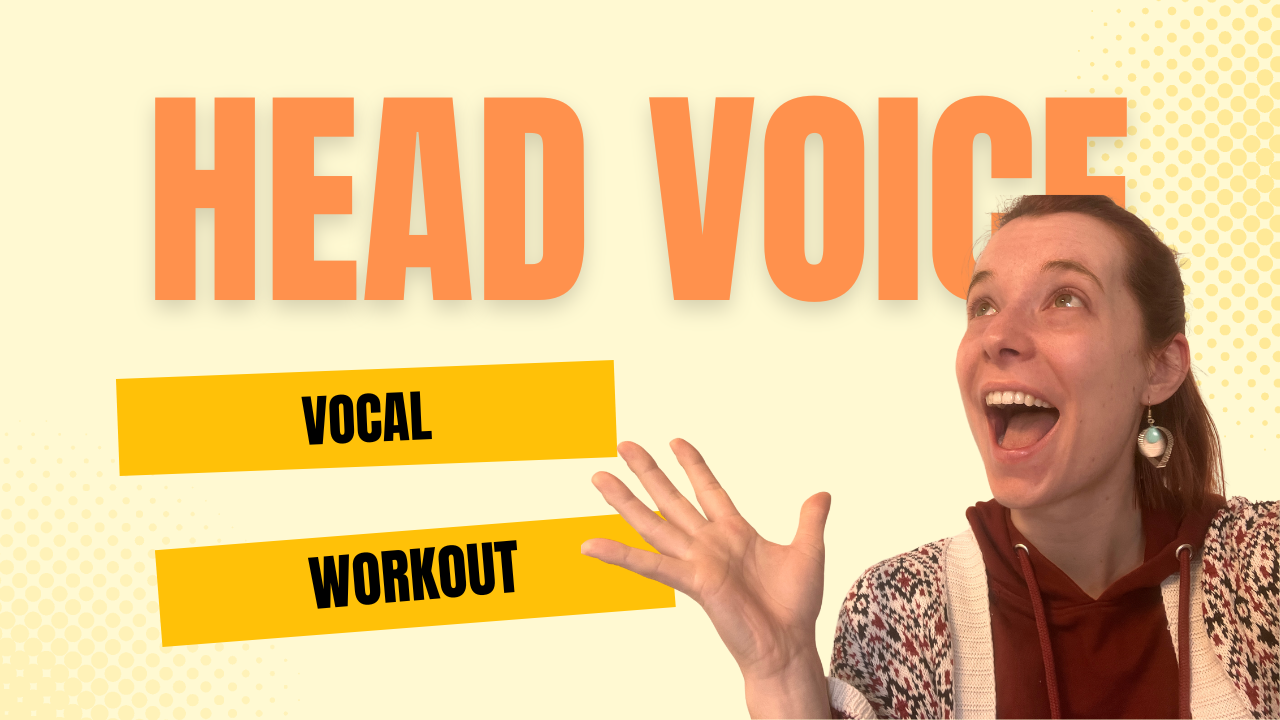Vocal Workout: Head Voice
May 18, 2023
Have you ever wondered why some singers can sing high notes easily while others struggle? The answer is simple: head voice. Your head voice is the higher range of your singing voice and is an essential component of any well-rounded vocal technique. Whether you're an aspiring singer or an experienced vocalist, training your head voice is crucial for unlocking your full performance potential.
Common Mistakes of Beginner Singers
Many beginner singers are scared to sing in their head voice. They are terrified of sounding light, breathy, or shaky. They get caught in a vicious circle because if they avoid singing in their head voice because it doesn't sound pleasant and continue to avoid practicing, the head voice will weaken and lose power. We want to develop that head voice muscle to sing with a lot of energy throughout.
The second mistake most beginner singers make is failing to transition between chest and head voices or doing so too late.
It's essential to strengthen and utilize your head and chest voice to harness your vocal abilities' full power and range. Understanding the common mistakes that hinder your vocal performance is the first step towards correcting them and building confidence as a trained singer.
You can improve your voice and achieve your singing goals. In this episode, I will provide exercises to enhance your vocal skills.
-
Make a 'BRRR' sound. You can use your fingers if making a 'brrrr' sound is difficult. Place one in each corner of your mouth. Stay out of the way back or up, but try to find a sweet spot there. If your 'brrrr' doesn't start without the fingers, it might be a problem with breath support. If it helps, use your fingers.
-
Make a 'YOOHOO' sound. That is your head voice. Make it theatrical, very operatic, and keep your mouth vertical. Try to produce some extra tension around the larynx.
-
Make a harsh 'YEEEE' sound. Try to feel that 'yeeee' sound in your mouth. You might feel an itch in your tongue while doing so. That sharpness in the sound adds some power to your head voice.
Let's put all these exercises in the "You Say" song by Laura Daigle.
You say I am loved when I can't feel a thing
You say I am strong when I think I am weak
Practice singing the song and taking it slightly higher than the first try.
If you have any stress or difficulty doing this, these exercises are excellent for training your head voice. These exercises might make you feel like moving out of your comfort zone, but the more you perform these exercises, the more that singing style will become ingrained in your vocal muscle memory.
I have an upcoming training called Discover the Most Important Vocal Technique to Release Tension when Singing. This training will help if you are feeling any tension. Click here to sign up for the free training!
I hope to see you there, and if not, I hope to see you back here. We'll continuously practice these exercises to develop those voice muscles.
Thank you for taking the time to work on your vocal growth, and I look forward to seeing you next week!
Sing High Notes Easily Without Tension Or Hoarseness
Download the Mix Voice Vocal Workout with sing-a-long exercises to train your voice for FREE 👇🏻
We hate SPAM. We will never sell your information, for any reason.

